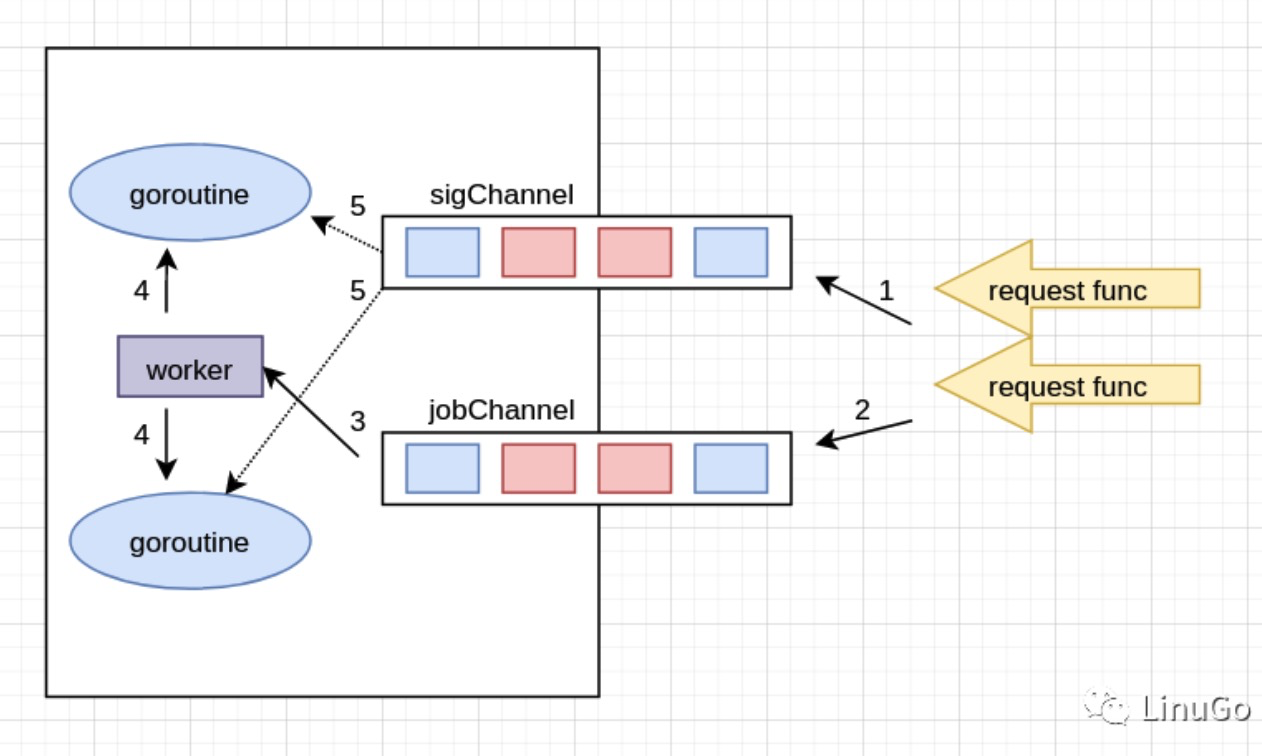go 携程池限制并发
思路:
总体使用生产者消费者模式。使用两个有缓冲区的channel来实现协程的并发控制,一个sigChannel通过缓冲空间限制最大的协程数量,另一个jobChannel则用于传递请求的数据(包括请求函数以及参数),该jobChannel对于是否缓冲没有要求。
流程:
(1)首先当请求到来之后,往sigChannel中写入标志位数据,如果此时有空闲位置,则不会阻塞在此处;
(2)之后往jobChannel中写入要执行的函数以及参数;
(3)后台监听jobChannel的函数worker(该函数要源源不断读取管道数据)则会取出管道中的数据;
(4)worker创建goroutine执行请求函数;
(5)该请求函数执行完成后,goroutine再去取出sigChannel管道中的标志数据,腾出来位置;
注:如果开始时候sigChannel写数据写入不了,则说明该池子满了,则需要阻塞等待。这样就实现了使用sigChannel控制并发量的功能。

代码
package main
import (
"fmt"
"net/http"
//"context"
_ "net/http/pprof"
)
type Info struct {
ParamFunc func(c int)
Param int
}
type Task struct {
taskLet chan Info
taskCmp chan int64
}
type Pool struct {
tasks *Task
taskNum int64
}
func NewPool(n int64) *Pool{
taskc := make(chan Info, n)
workc := make(chan int64, n)
return &Pool{
tasks: &Task{
taskLet: taskc,
taskCmp: workc,
},
taskNum: n,
}
}
func (p *Pool) Put(a Info) {
p.tasks.taskCmp <- 1
p.tasks.taskLet <- a
}
func (p *Pool) Run() {
for {
select {
case let := <- p.tasks.taskLet:
go p.work(let)
}
}
}
func (p *Pool) work(f Info) {
f.ParamFunc(f.Param)
<- p.tasks.taskCmp
}
func test(c int) {
fmt.Println(c)
}
func main() {
// 限制并发
po := NewPool(50)
go func() {//使用pprof跟踪
http.ListenAndServe(":9876",nil)
}()
go po.Run()
var i int = 1
for {
in := Info{test, i}
po.Put(in)
i++
}
}
https://mp.weixin.qq.com/s/Y80kalSIlGhaDx3uWxoMig
small_lei_it 技术无止境,追求更高。




 浙公网安备 33010602011771号
浙公网安备 33010602011771号